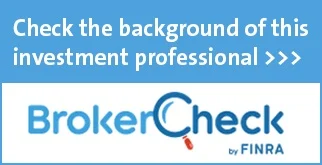Group health insurance trends have undergone a few changes during the past few years, and one of the changes is the number of program benefits that are offered as the industry moves to a more individually connected environment. Technological advances have also contributed to these changes, giving both employers and individuals more choices when it comes to selecting and managing the company’s healthcare benefits.

Group Health Insurance Responds to Changing Trends
The changes haven’t affected how group insurance plans are administered and managed for companies. Today, group benefit options offer improved reimbursement programs, pharmacy containment costs for individuals with monthly prescriptions or infrequent medicines, and specialty service coverage. Moving forward in this new digital era, information is more transparent for group participants, and insurers can now provide online access directly to the insured group plans. Employers and employees can easily read and learn more about the designated group insurance plans online.
Several advantages exist in the group benefits packages structured with both the flexibility individuals need and employers seek; they are composed of programs covering spending, retirement savings, and multiple forms of insurance for health, life, and disability. Two areas that are experiencing rising costs are medical specialty treatments and pharmacy prescriptions. Individual solutions within the group health insurance plan are funded savings accounts for extra health costs, which help to reduce an individual’s annual out-of-pocket expenses. In some cases, these program contributions are set up with pre-tax advantages.
Group Benefits
The cost of healthcare is a widespread topic of concern as the industry continues to see costs increase across the board. Proven group health insurance plans to be responsive to these concerns and provide a number of group benefits to offset the rising cost without loss to the quality of healthcare coverage.
- Section 125 Cafeteria Plan is sometimes overlooked by employer management when it comes to enhancing employee benefits and reducing employer tax liabilities. This benefit is a pre-tax advantage covering medical and care expenses for the individual and dependents. At the same time, it can increase the net take-home pay by reducing an employee’s taxable income.
- A healthcare savings program is now more a part of the healthcare system as a tax-exempt advantage for the employer and employee, with studies showing significant benefits of maintaining healthier lifestyles. What’s unique about this benefit is that the funds belong to the individual and can be rolled over to newer plans or moved with a change of employment. These funds may also help in paying insurance premiums during the job change.
- It’s never too early to begin investing for retirement by making contributions to a 401(k) plan. Here’s an opportunity for midstream professionals to take advantage of another pre-tax saving plan. Depending on the options within the company’s group plan, besides the employer’s shared contributions, employees can also contribute after taxes, reaching the maximum allowed limits. And like the healthcare savings program, these funds belong to the individual and can be rolled over when changing employment without a penalty.
Conclusion
Although the healthcare industry has undergone changes, group health insurance is making it possible for employers to design a group benefit that fits the business, ensuring employees have an affordable group plan with individual options for sustaining better health. It’s critical for employers to strategically align with a recognized group insurer when it comes to health plans, with an emphasis on customizing the company’s benefits by using supplemental programs to help cover a healthcare situation.




